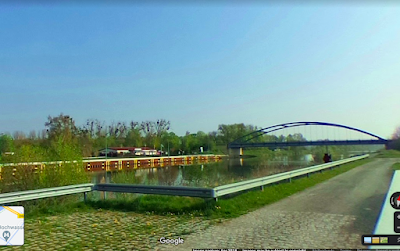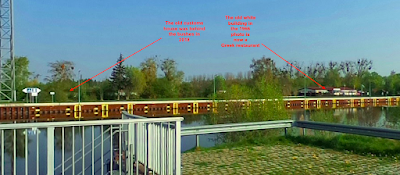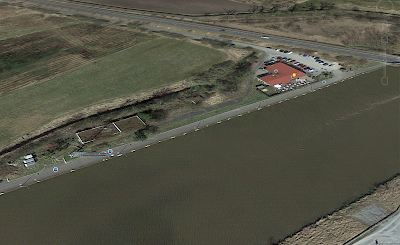When research is a togetherness thing
The last few days have been fascinating. I've been doing some research for my work-in-progress, which is a sequel to The Skipper's Child, the novel I wrote about twelve years ago. My young hero, Arie, is now 16 and has joined his father, Hendrik, as the co-skipper of their barge, Rival.
The new adventure takes them to Germany and to the East German border, so I've been trying to find out how things were at that time, and Koos, with his skills in reading German, has been helping me. I have to admit I might have to change my plot a little given what I've now found out, but this website has provided a heap of information for me on what happened at the iron curtain border. It was pretty difficult for anyone to get through it, not least Germans, but as often happens, I've got hooked on the research itself. What Arie and the Kornets will do, I now have no idea, and my story has yet to sort itself out! But it's giving me loads of new ideas.
If you look at the site, you'll see that on the GDR side, there were look-out posts on the bridges (crows' nests) and a barrier that slid across the canal when transit stopped for the day. The translation for the site is pretty decent, so let Google do it for you if you don't speak German, like me (I've had Koos to help me). Seeing the old photos gave me quite a chilling feeling, so it was a bit of light relief when we started looking for the customs post on the West German side.
Apparently, so the site says, German skippers could leave personal possessions there before entering the east if they were prohibited items. They could then pick them up again on the way out. A nice, human touch, I think. Anyway, in 1966, the year of my story, the West German checkpoint was the white building shown below, some 2.6 kilometres from the border. Today, it is a Greek restaurant, somewhat extended and with good mooring space in front of it. The sepia photo is quite evocative, isn't it? The screenshot from Google maps beneath it with its colour changes the whole feeling the place conveys.
 A photo from 1966 showing that what is now a Greek restaurant used to be
A photo from 1966 showing that what is now a Greek restaurant used to be the West German checkpoint
 Here it is as seen in satellite view in 2018, complete with the bridge
Here it is as seen in satellite view in 2018, complete with the bridgeAt some point after 1966, though, a new customs checkpoint was built. I'm guessing that was some time in the 70s and that the photo below, which we found on the same website, was taken in the 80s but it doesn't say so.
 The old West German customs house 2.7 kms from the East German border. This photo has no
The old West German customs house 2.7 kms from the East German border. This photo has no date, sadly, but I'm guessing it's from the 1980s
It looks typically 70s to me: functional, flat-roofed and a little severe. Koos and I became intrigued by the building and started looking on satellite view for the images available. Germany makes it more difficult to find things as there's no street view due to their privacy rules (which I'm inclined to agree with), so it made us even more determined to keep looking. However, where people have taken photos and geotagged them, it's possible to see what's there.
 This was the view from the southern bank in 2018. The customs house is just visible
This was the view from the southern bank in 2018. The customs house is just visible behind the trees
In studying the image above, I saw signs that the old customs building was still there in April, 2018. By August, as is shown in the image below, it had gone, demolished for reasons unknown, which is a pity, but I'm glad the original checkpoint building is still in use and thriving.
 The satellite image from August 2018, showing just the outline of the old customs house.
The satellite image from August 2018, showing just the outline of the old customs house.So you can see we've been a bit side-tracked. The original checkpoint building will be the only one relevant to my 1966 story, but it's been an entertaining diversion to find out where the later one stood and when it disappeared. We're now talking about making making a road trip to go and see the border crossing. This is why I love research; it takes me to new and undiscovered places. And maybe, just maybe, I'll find the key to unlock my plot there.
Have a good week allemaal. I hope life treats you well wherever you are.



